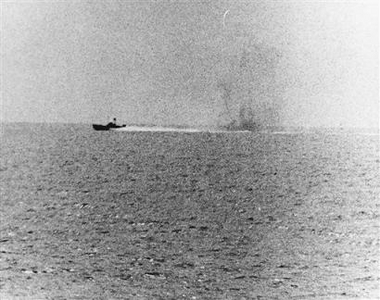|
US govt skewed intelligence to enter Vietnam War
(AP)
Updated: 2005-12-02 09:20 "In truth, Hanoi's navy was engaged in nothing that night but the salvage of
two of the boats damaged on 2 August," Hanyok wrote.
He said "the handful of SIGINT reports which suggested that an attack had
occurred contained severe analytical errors, unexplained translation changes,
and the conjunction of two unrelated messages into one translation. This latter
product would become the Johnson administration's main proof of the Aug. 4
attack."
He said he did not find "manufactured evidence and collusion at all levels";
rather, it appeared intelligence-gatherers had made a series of mistakes and
their superiors did not set the record straight.
Conflicting and confused reports from the scene have long cast doubt on
whether the events unfolded as claimed.
Hanyok's analysis of previously top secret intelligence adds insight on North
Vietnam's communications from that time, showing, he said, that the supposed
attackers did not even know the location of the destroyers, the USS Maddox and
C. Turner Joy, as the two ships patrolled off the North Vietnam coast.
Indeed, a shorter agency study done years earlier and also released Thursday
indicated the ships did not know what, if anything, was coming at them as they
zigzagged to evade what the crews feared were torpedoes, and as they fired on
targets identified by radar.

This photo provided by the US Navy shows a
North Vietnamese motor torpedo boat attacking the USS Maddox, Aug. 2, 1964
in the Gulf of Tonkin. [AP] | That study concluded with a wry note, saying the destroyers resumed their
patrols after a heavy round of U.S. airstrikes on North Vietnam ports, "and the
rest is just painful history."
A detailed chronology assembled days after the episode for the Joint Chiefs
of Staff by J.J. Merrick, commander of Destroyer Division 192, reflected the
uncertainty of that night.
It said that sonar in many cases picked up sounds that were believed to be
torpedoes but turned out to be "self noise" åK½ï¿½ the beating of the ships' own
propellers, or noise from patrol boats or supporting planes that were strafing
the dark sea in cloudy skies, unable to see any prey.
In another instance, however, the report contended a "torpedo wake was seen
by four people."
The Maddox had come under fire from North Vietnamese patrol boats Aug. 2,
taking only superficial damage.
|